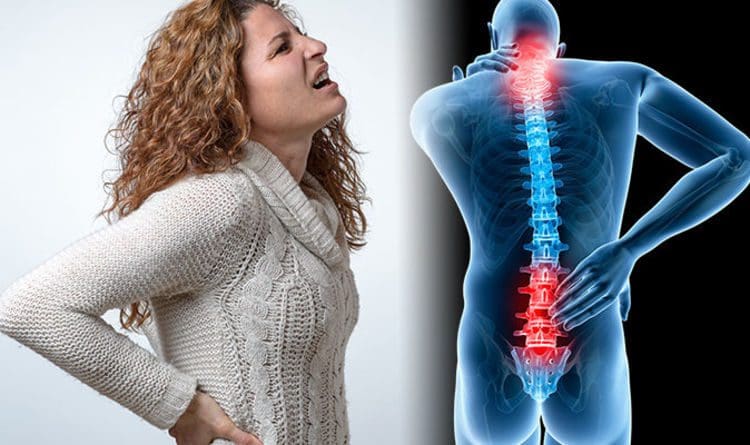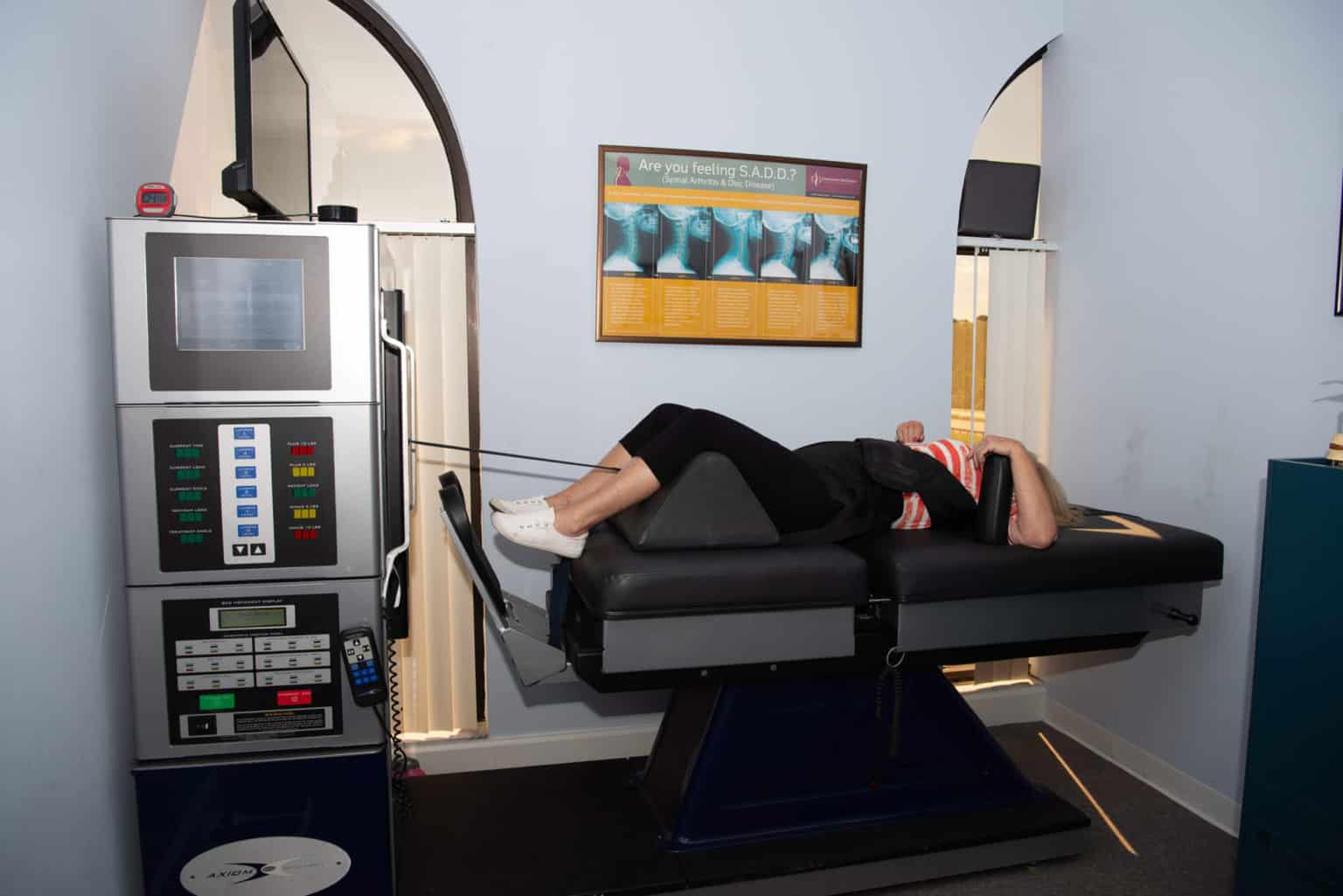How efficient is spinal decompression to alleviate pain-like symptoms in many individuals with low back pain?
Contents
Introduction
Low back pain is a common condition that affects many people worldwide. It can cause discomfort and prevent individuals from returning to their normal routines. The pain can be specific or non-specific, depending on the severity of the symptoms. It can also be associated with other musculoskeletal conditions, such as sciatica, DDD, and osteoarthritis, affecting the spine’s mobility and stability. Fortunately, treatments are available to reduce the pain and associated symptoms while relieving the lumbar spinal region. At the same time, working with certified medical providers who use our patients’ information to treat individuals experiencing pain-like symptoms associated with low back pain. We inform them that non-surgical treatments like decompression can help reduce the progression of low back pain and its associated pain-like symptoms. At the same time, we also explain to them how adding decompression to their routine can alleviate the pain-like symptoms. We encourage our patients to ask essential questions while seeking education from our associated medical providers about their situation. Dr. Alex Jimenez, D.C., provides this information as an educational service. Disclaimer
The Burden Of Low Back Pain
Do you often experience muscle stiffness and aches from excessive sitting at your desk job? Do you feel excruciating pain in your hips and low back after a long day of moving heavy objects? Or do you feel constant pain after moving from one location to another, only to find relief when resting? Many of these scenarios are a normal routine associated with low back pain for many working people. Since low back pain is common worldwide, it can greatly impact many individuals trying to alleviate it. For many individuals dealing with low back pain, it can be an economic burden, and it causes unnecessary stress to the working individual. (Maetzel & Li, 2002) When a person is dealing with low back pain and is working, it can lead to work disability which then cascades to frequent doctor visits to missing time off work to eventually short-term disability. At the same time, low back pain has many potential, either normal or traumatic factors affecting the region of the lower back, hips, and buttocks. Many individuals with low back pain noticed the corresponding relationship between the genetic and environmental factors that often correspond to where the pain is localized. (Manek & MacGregor, 2005)

Low back pain can often develop at an early age and be associated with serious pathologies (Jones & Macfarlane, 2005) that can correlate with environmental factors that lead to spinal misalignment or subluxation. Low back pain covers a huge spectrum of pain-like conditions that are frequently overlapped and can be prone to different stressors that can impact the body while becoming a challenge to diagnose when getting treated. (Knezevic et al., 2021) However, many individuals with low back pain can find relief from not only the economic burden of low back pain but also find the right therapies to alleviate pain-like symptoms associated with low back pain from their bodies.
Body In Balance- Video
When it comes to treating low back pain, many individuals will go to their primary doctors for a physical examination to determine where the pain radiates in the lumbar region. (Chou, Qaseem, et al., 2007) At the same time, the individual’s primary doctor should assess what factors are the causes for the development of low back pain and come up with a customized treatment plan to reduce the pain from the lumbar region while also working with other medical professionals to kick start the person’s health and wellness journey. Numerous non-surgical treatments are cost-effective, safe, and non-pharmacological when alleviating low back pain. They can provide positive, beneficial results after a few sessions of treatments to reduce low back pain. Non-surgical treatments like chiropractic care, massage therapy, spinal decompression, and physical therapy can help relieve many individuals with low back pain. The video above explains how these treatments, combined with the right tools, can help bring balance back into the body.
The Efficacy Of Spinal Decompression

When reducing the effects of low back pain, non-surgical treatments are cost-effective and safe for many individuals with low back pain. Many non-surgical therapies are efficient for chronic or acute low back pain and can be combined with numerous therapies to reduce the chances of low back pain from returning in the future. (Chou, Huffman, et al., 2007) Non-surgical treatments like spinal decompression are efficient for low back pain as it helps stretch the tight, shortened muscles in the lumbar region and reduce any pain-like symptoms associated with low back pain.
How Spinal Decompression Alleviates Low Back Pain
Now how would spinal decompression alleviate low back pain? Well, since low back pain has many factors that can contribute to its development, one of these factors that can contribute to low back pain is compressed intervertebral discs. When the spinal discs are compressed, they can become herniated under pressure and aggravate the spinal nerve root, leading to low back pain symptoms. With spinal decompression, individuals will be strapped to a traction machine and have their bodies gently pulled to reduce pressure off the aggravated nerve and pull the disc back into its original position. To that point, spinal decompression allows mobility back to the lower extremities and improves stability in the lumbar region. (Meszaros et al., 2000) Additionally, decompression can help reduce the effects of low back pain, whether done manually or through a traction machine that allows negative pressure into the spine while allowing the body to heal itself and rehydrate the spinal discs naturally. (Macario et al., 2008) With spinal decompression combined with other therapies, many people can return to work pain-free while being more mindful of how they listen to their bodies.
References
Chou, R., Huffman, L. H., American Pain, S., & American College of, P. (2007). Nonpharmacologic therapies for acute and chronic low back pain: a review of the evidence for an American Pain Society/American College of Physicians clinical practice guideline. Ann Intern Med, 147(7), 492-504. https://doi.org/10.7326/0003-4819-147-7-200710020-00007
Chou, R., Qaseem, A., Snow, V., Casey, D., Cross, J. T., Jr., Shekelle, P., Owens, D. K., Clinical Efficacy Assessment Subcommittee of the American College of, P., American College of, P., & American Pain Society Low Back Pain Guidelines, P. (2007). Diagnosis and treatment of low back pain: a joint clinical practice guideline from the American College of Physicians and the American Pain Society. Ann Intern Med, 147(7), 478-491. https://doi.org/10.7326/0003-4819-147-7-200710020-00006
Jones, G. T., & Macfarlane, G. J. (2005). Epidemiology of low back pain in children and adolescents. Arch Dis Child, 90(3), 312-316. https://doi.org/10.1136/adc.2004.056812
Knezevic, N. N., Candido, K. D., Vlaeyen, J. W. S., Van Zundert, J., & Cohen, S. P. (2021). Low back pain. The Lancet, 398(10294), 78-92. https://doi.org/10.1016/s0140-6736(21)00733-9
Macario, A., Richmond, C., Auster, M., & Pergolizzi, J. V. (2008). Treatment of 94 Outpatients With Chronic Discogenic Low Back Pain with the DRX9000: A Retrospective Chart Review. Pain Practice, 8(1), 11-17. https://doi.org/10.1111/j.1533-2500.2007.00167.x
Maetzel, A., & Li, L. (2002). The economic burden of low back pain: a review of studies published between 1996 and 2001. Best Pract Res Clin Rheumatol, 16(1), 23-30. https://doi.org/10.1053/berh.2001.0204
Manek, N. J., & MacGregor, A. J. (2005). Epidemiology of back disorders: prevalence, risk factors, and prognosis. Curr Opin Rheumatol, 17(2), 134-140. https://doi.org/10.1097/01.bor.0000154215.08986.06
Meszaros, T. F., Olson, R., Kulig, K., Creighton, D., & Czarnecki, E. (2000). Effect of 10%, 30%, and 60% body weight traction on the straight leg raise test of symptomatic patients with low back pain. J Orthop Sports Phys Ther, 30(10), 595-601. https://doi.org/10.2519/jospt.2000.30.10.595
Disclaimer
General Disclaimer, Licenses and Board Certifications *
Professional Scope of Practice *
The information herein on "The Efficacy Of Spinal Decompression For Low Back Pain" is not intended to replace a one-on-one relationship with a qualified health care professional or licensed physician and is not medical advice. We encourage you to make healthcare decisions based on your research and partnership with a qualified healthcare professional.
Blog Information & Scope Discussions
Welcome to El Paso's Premier Wellness and Injury Care Clinic & Wellness Blog, where Dr. Alex Jimenez, DC, FNP-C, a Multi-State board-certified Family Practice Nurse Practitioner (FNP-BC) and Chiropractor (DC), presents insights on how our multidisciplinary team is dedicated to holistic healing and personalized care. Our practice aligns with evidence-based treatment protocols inspired by integrative medicine principles, similar to those on this site and on our family practice-based chiromed.com site, focusing on naturally restoring health for patients of all ages.
Our areas of multidisciplinary practice include Wellness & Nutrition, Chronic Pain, Personal Injury, Auto Accident Care, Work Injuries, Back Injury, Low Back Pain, Neck Pain, Migraine Headaches, Sports Injuries, Severe Sciatica, Scoliosis, Complex Herniated Discs, Fibromyalgia, Chronic Pain, Complex Injuries, Stress Management, Functional Medicine Treatments, and in-scope care protocols.
Our information scope is multidisciplinary, focusing on musculoskeletal and physical medicine, wellness, contributing etiological viscerosomatic disturbances within clinical presentations, associated somato-visceral reflex clinical dynamics, subluxation complexes, sensitive health issues, and functional medicine articles, topics, and discussions.
We provide and present clinical collaboration with specialists from various disciplines. Each specialist is governed by their professional scope of practice and their jurisdiction of licensure. We use functional health & wellness protocols to treat and support care for musculoskeletal injuries or disorders.
Our videos, posts, topics, and insights address clinical matters and issues that are directly or indirectly related to our clinical scope of practice.
Our office has made a reasonable effort to provide supportive citations and has identified relevant research studies that support our posts. We provide copies of supporting research studies upon request to regulatory boards and the public.
We understand that we cover matters that require an additional explanation of how they may assist in a particular care plan or treatment protocol; therefore, to discuss the subject matter above further, please feel free to ask Dr. Alex Jimenez, DC, APRN, FNP-BC, or contact us at 915-850-0900.
We are here to help you and your family.
Blessings
Dr. Alex Jimenez DC, MSACP, APRN, FNP-BC*, CCST, IFMCP, CFMP, ATN
email: coach@elpasofunctionalmedicine.com
Multidisciplinary Licensing & Board Certifications:
Licensed as a Doctor of Chiropractic (DC) in Texas & New Mexico*
Texas DC License #: TX5807, Verified: TX5807
New Mexico DC License #: NM-DC2182, Verified: NM-DC2182
Multi-State Advanced Practice Registered Nurse (APRN*) in Texas & Multi-States
Multi-state Compact APRN License by Endorsement (42 States)
Texas APRN License #: 1191402, Verified: 1191402 *
Florida APRN License #: 11043890, Verified: APRN11043890 *
License Verification Link: Nursys License Verifier
* Prescriptive Authority Authorized
ANCC FNP-BC: Board Certified Nurse Practitioner*
Compact Status: Multi-State License: Authorized to Practice in 40 States*
Graduate with Honors: ICHS: MSN-FNP (Family Nurse Practitioner Program)
Degree Granted. Master's in Family Practice MSN Diploma (Cum Laude)
Dr. Alex Jimenez, DC, APRN, FNP-BC*, CFMP, IFMCP, ATN, CCST
My Digital Business Card
Licenses and Board Certifications:
DC: Doctor of Chiropractic
APRNP: Advanced Practice Registered Nurse
FNP-BC: Family Practice Specialization (Multi-State Board Certified)
RN: Registered Nurse (Multi-State Compact License)
CFMP: Certified Functional Medicine Provider
MSN-FNP: Master of Science in Family Practice Medicine
MSACP: Master of Science in Advanced Clinical Practice
IFMCP: Institute of Functional Medicine
CCST: Certified Chiropractic Spinal Trauma
ATN: Advanced Translational Neutrogenomics
Memberships & Associations:
TCA: Texas Chiropractic Association: Member ID: 104311
AANP: American Association of Nurse Practitioners: Member ID: 2198960
ANA: American Nurse Association: Member ID: 06458222 (District TX01)
TNA: Texas Nurse Association: Member ID: 06458222
NPI: 1205907805
| Primary Taxonomy | Selected Taxonomy | State | License Number |
|---|---|---|---|
| No | 111N00000X - Chiropractor | NM | DC2182 |
| Yes | 111N00000X - Chiropractor | TX | DC5807 |
| Yes | 363LF0000X - Nurse Practitioner - Family | TX | 1191402 |
| Yes | 363LF0000X - Nurse Practitioner - Family | FL | 11043890 |








